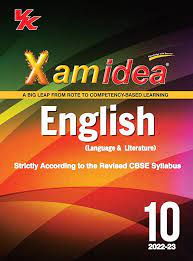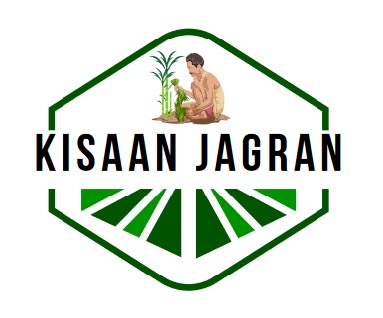
Animal Kingdom
Animal Kingdom
1. True legged larva of bettles is called;
(a) Wriggler (b) Maggot
(c) Grub (d) Caterpillar
Ans. C
2. Select viviparous amphibian:
(a) Alyles (b) Hyla
(c) Amvbystoma (d) Salamander
Ans. D
3. Roacohperus has:
(a) Webs (b) Adhesive discs
(c) Both of these (d) None of these
Ans. C
4. Reptile adopted for deserts is:
(a) Python (b) Phyronosoma
(c) Gavial (d) Homidactyphs
Ans. B
5. Glass snake is a:
(a) Limbed snake (b) Limbless lizard
(c) Non-poisonous snake
(d) Poisonous snake
Ans. B
6. Which of following snakes shows parthenogenesis?
(a) Hydrus (b) Crotalus
(c) Typing (d) Python
Ans. C
7. Smallest bird in India is:
(a) Sun bird (b) Sparrow
(c) Humming bird (d) Kiwi
Ans. A
8. Excessive hunting has caused extinction of:
(a) Duck billed platypus
(b) Dodo bird
(c) Tiger
(d) Indian Desert Bustard
Ans. B
9. Growing mammals are included in:
(a) Lagomorphs (b) Extents
(c) Both of these (d) None of these
Ans. C
10. Most intelligent ape is:
(a) Chimpanzee (b) Orangutan
(c) Gorilla (d) Incisors
Ans. A
11. Tusk of elephants are:
(a) Molars (b) Premolars
(c) Canines (d) Incisor sans
Ans. D
12. Second largest animal in India is:
(a) Rhinoceros (b) Giraffe
(c) Hippocampus (d) Elephant
Ans. A
13. Fastest mammal is:
(a) Horse (b) Lion
(c) Tiger (d) Cheetah
Ans. D
14. Food storing cells of sponges are:
(a) Phagocytes (b) Thesopcytws
(c) Collencytes (d) Trohpycytes
Ans. B
15. Select the largest living invertebrate:
(a) Bromeliad (b) Giant squid
(c) Ginat sepia (d) Seymouria
Ans. B
16. Orangutan is confined to:
(a) New Zealand (b) Africa
(c) Indonesia (d) India
Ans. C
17. The tusks of elephants are modified form of:
(a) Molars (b) Incisors
(c) Canines (d) Snout
Ans. B
18. Horses belong to:
(a) Primates
(b) Edentates
(c) Odd- toed ungulates
(d) Even toed ungulates
Ans. C
19. Two pairs of long, chisel- like incisors are characteristic features of:
(a) Lagomorphs (b) Edentates
(c) Rodents (d) Primates
Ans. A
20. Pangolin belongs to:
(a) Lagomorphs (b) Edentates
(c) Rodents (d) Primates
Ans. B
21.Which of the following is the tiniest mammal?
(a) Bat (b) Rat
(c) Cat (d) Water shrew
Ans. D
22. Shrew, moles and hedshehogs belong to which of the following evolutionary line:
(a) Ungulates (b) Whales
(c) Rodents &rabbits (d) Insectivorous line
Ans. D
23. Kangaroo belongs to sub-class:
(a) Eutheria (b) Metathesis
(c) Prototheria (d) None of these
Ans. B
24. Wish bone off birds is a part of:
(a) Pictorial girdle (b) Hind limb
(c) Skill (d) Pelvic gridle
Ans. A
25. A limbless amphibian is:
(a) Hyla (b) Neturus
(c) Ureratyphlus (d) Amphiuma
Ans. C
26. Sea horse is a:
(a) Mammal (b) Bony fish
(c) Echinodermate (d) Coelenterate
Ans. B
27. Dog fish is:
(a) Viviparous (b) Oviaprous
(c) Ovo-viviparous (d) None of these
Ans. C
28. Amanita includes:
(a) Reptiles, birds and mammals
(b) Amphibians, reptiles and birds
(c) Amphibians and reptiles
(d) Fishes and amphibians
Ans. A
29. The mammal which does not posses 7 cervical vertebra:
(a) Elephant (b) Manateee
(c) Giraffe (d) Horse
Ans. B
30. Select an anatropous fish:
(a) Anabas (b) Exocetes
(c) Petromyzon (d) Hippocampus
Ans. C
31. National bird of New Zealand is:
(a) Kiwi (b) Cassowary
(c) Ostrich (d) Emu
Ans. A
32. Largest distance converged (17,300Km) in bird migration is by:
(a) Snow owl (b) Flyover
(c) Siberian crane (d) Arctic tern
Ans. D
33. Fastest flying birds is:
(a) Albetroetes (b) Sun bird
(c) Swift (d) Humming bird
Ans. C
34. Select the living fossil:
(a) King crab (b) Latimeria
(c) Sphenoid (d) Al of these
Ans. D
35. Most primitive mollusk is:
(a) Chiton (b) Pentad
(c) Nautilus (d) Neoplinia
Ans. D
36. Largest invertebrates is:
(a) Giant snail (b) Giant squid
(c) Giant clam (d) Giant octopus
Ans. B
37. Aristotle’s lantern is found in;
(a) Sea cucumber (b) Sea urchin
(c) Brittle star (d) Star fish
Ans. B
38. Study of mollusks is called:
(a) Philology (b) Mycolongy
(c) Concholgy (d) Malacology
Ans. B
39. Johnston`s organ is found in:
(a) Abdominal glands of spider
(b) Abdomen of housefly
(c) Antenna of mosquito
(d) Antenna of cockroach
Ans. D
40. Edison os produces by:
(a) Abdominal glands
(b) Corpora cardiac
(c) Corpora allata
(d) PRothoracic glands
Ans. D
41. In honey bee, the drones are developed from;
(a) Starved larvae
(b) Unfertilized eggs by parthenogenesis
(c) Larvae fed on bee bread
(d) Larvae fed on royal jelly
Ans. B
42. Claw-like body appendages called chelicerae are found in:
(a) King crab (b) Preying manits
(c) Prawn (d) Crab
Ans. B
43. Which one of the following is called “living fossil”?
(a) Termite (b) King crab
(c) Crab (d) Lac insect
Ans. B
44. Red dye coloring cosmetics is obtained from:
(a) Red ant (b) Honey bee
(c) Cochineal insect (d) Lac insect
Ans. C
45. The unique characteristic features of the mammal are:
(a) Presence of sweat glands
(b) Presence of hair of the body
(c) Presence of mammary glands
(d) All of these
Ans. D
46. Which of the following is egg-laying mammal?
(a) Seal (b) Man
(c) Kangaroo (d) Duck-bill platypus
Ans. D
47. Since there are no teeth is birds, the food is churned in:
(a) Pharynx (b) Intestine
(c) Gizzard (d) Crop
Ans. C
48. The fore limbs of ave are modified to help in:
(a) Wading (b) Perching
(c) Grassping (d) Flight
Ans. C
49. The presence of feathers and power of flight are characteristic features of:
(a) Amphibians (b) Reptiles
(c) Aves (d) Mammals
Ans. B
50. The snake smells with the help of:
(a) Forked tongue (b) Skin
(c) Nostrils (d) None of these
Ans. A


